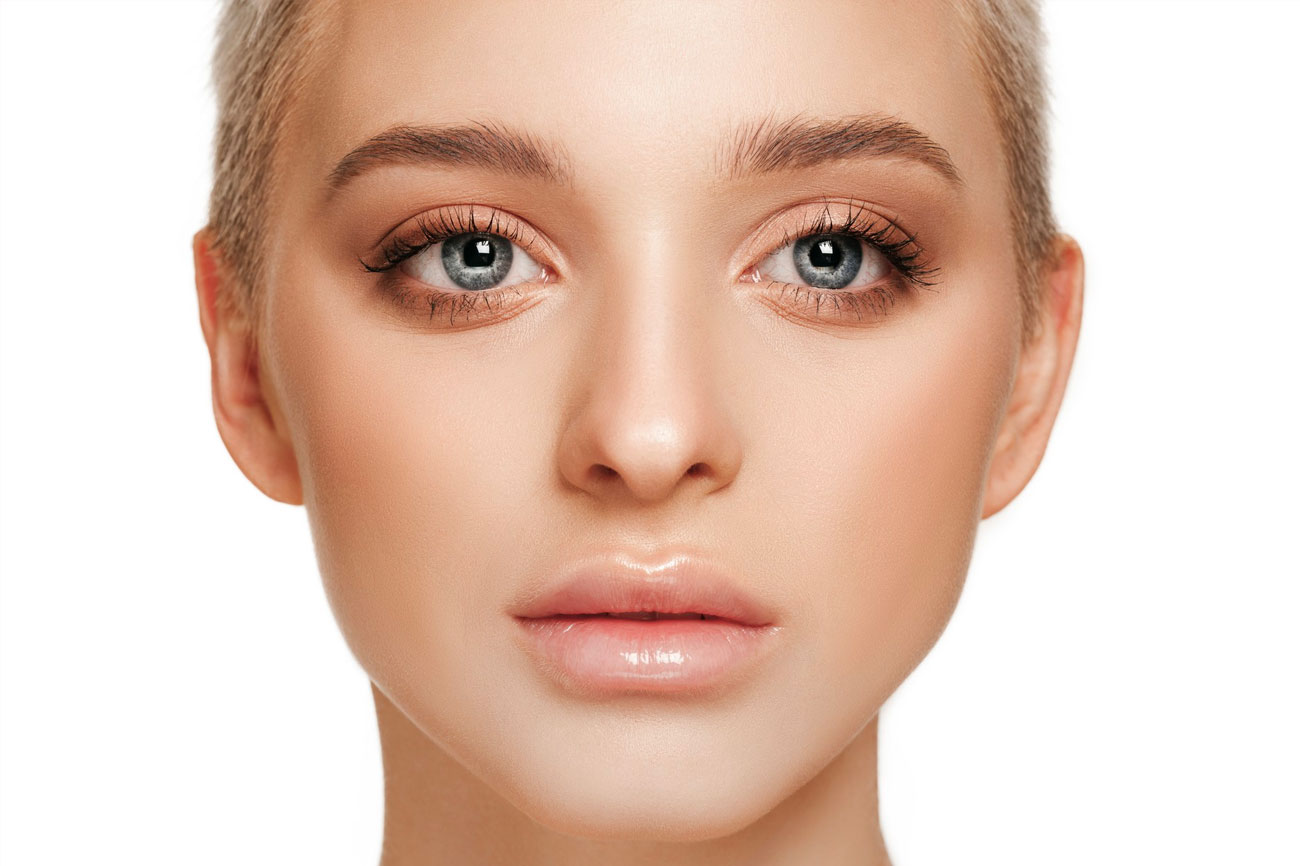, or as many refer to them—tear trough fillers, help improve the appearance of dark circles, hollowing, and fine lines under the eyes. However, how safe is it for people who have sensitive skin? The following article covers safety, effectiveness, and possible risks tear trough fillers present to sensitive skin, supported by data and practical examples serving as a comprehensive guide.
What are Tear Trough Fillers?
Tear trough fillers are a cosmetic dermal filler designed to treat the under-eye area by rejuvenating it through the reduction of signs of aging, tiredness, and hollowing. Commonly, they include hyaluronic acid, a naturally active ingredient that can add volume to the skin, moisturizing it and giving it a more plump, youthful appearance. Common brands include Juvéderm and Restylane—both report high satisfaction rates and are relatively well-tolerated by most patients.
The most common choice for under-eye treatments would be hyaluronic acid fillers since they are excellently integrated within the skin tissue and provide a soft, natural look. Generally, it can last between 6 to 12 months; though some patients claim its results last up to 18 months. In the Journal of Cosmetic Dermatology, a study showed that 85% of patients who underwent the treatment of tear troughs with HA fillers reported improvement in under-eye hollowing and discoloration, while 92%, in turn, were found to show satisfaction with their treatment results.
HA-based fillers are, in general, safer for sensitive skin because they rarely produce a high-grade inflammatory response; this said, each patient’s skin and sensitivity level should be carefully judged by a qualified injector prior to the treatment.
How Fillers Work Under Eyes
Tear trough fillers just fill in the hollowness beneath the eyes, which genetically could be passed on, part of aging, or induced by lifestyle. When the volume is restored by injecting filler into the tear trough, it smoothes out the under-eye area and decreases shadows to lighten the area underneath the eyes. This would give a more rested and youthful appearance; many report feeling they look five to seven years younger after the treatment.
Aesthetic practitioners often take the strategy of a slow, steady approach to injection, often especially in skin types that are pretty sensitive. In one study published by the Aesthetic Surgery Journal, a so-called “micro-droplet” injection technique—injecting small, spread-out droplets—was observed to reduce inflammation from post-treatment by up to 15% compared with traditional methods in sensitive-skinned patients. This can ensure minimum impact of the filler material on sensitive skin tissues and reduce bruising and swelling.
Sometimes, instead of a regular needle, a cannula with a blunt tip is used. According to the American Academy of Dermatology, the use of a cannula reduces the incidence of bruising up to 50% because this type of cannula decreases vascular trauma. The sensitivity of the skin will not be that traumatized with this method; hence, it gets applied smoothly and recovery takes an almost negligible length of time.
Common Ingredients in Fillers
Hyaluronic acid is the most common active ingredient used in tear trough fillers because of their very good biocompatibility and natural look. In general, HA fillers are well-tolerated, and even the most sensitive skin types should be able to endure them. A clinical review in the Journal of Cosmetic Medicine showed that 80% of sensitive-skinned patients experienced only mild reactions with HA fillers in the form of redness or slight swelling, resolving a couple of hours to days later.
Not all fillers contain HA, however. Some fillers may contain calcium hydroxylapatite, the ingredient in Radiesse, or poly-L-lactic acid, utilized in Sculptra. These types of fillers stimulate the skin to produce collagen. Thicker and heavier, these types of fillers are not quite as suitable for the fine skin underneath the eyes due to the greater risk of visible lumpiness. Current studies indicate that roughly 20% of sensitive skin patients do develop adverse reactions, such as bumps, with the non-HA fillers in the under-eye area; thus, hyaluronic acid would be safer for most cases.
It may also be necessary, in very sensitive skins, that a small amount of the filler is tested on some less conspicuous parts of the face before treatment is carried out. This way, it can be ascertained if the filler will cause an allergic reaction or undue inflammation of the skin under the eyes.
Risks for Sensitive Skin Types
Tear trough fillers are also more dangerous to people with sensitive skin, the complications being prolonged redness, swelling, bruising, and even skin irritation. Skin tends to be more sensitive to trauma; the fragile skin around the eyes is easily bruised. According to the American Academy of Dermatology, 30% of patients who have sensitive skin develop moderate bruising after the treatment, while only 10% of those who do not do so.
One of the biggest concerns with sensitive skin patients is that of having an allergic reaction. While rare, allergic reactions to the ingredients used in fillers do occur. Allergic sensitivity can be assessed, beforehand, by performing a patch test on the forearm or behind the ear before treating the sensitive area under the eye. It can be carried out in any dermatology or aesthetic medicine clinic. Normally, testing with patching is recommended to those patients who present skin sensitivities or allergies in the past.
Other ways of reducing the risks to sensitive skin include avoidance of the use of topical products that contain irritating ingredients, such as retinoids, glycolic acid, or alcohol, at least one week before and after treatment. These products encourage reddening and further sensitization of the skin, thus enhancing post-procedure complications.
Pre-Treatment Tips for Safety
Preparing well can significantly reduce tear trough fillers’ risks. Generally, a patient is guided on the things to avoid in order to reduce bruising and swelling. Blood-thinning medications including aspirin and ibuprofen must be avoided for a period of at least one week prior to treatment, as they may heighten the risk of bruising.
Other foods and supplements, such as fish oil, garlic, and vitamin E also contain a form of blood thinners. As one study in the Journal of Clinical Aesthetic Dermatology reported, the avoidance of these substances reduced bruising by approximately 40% in sensitive skin patients receiving fillers. About medications and supplements, those that are taken should be discussed beforehand by the patient when an appointment for fillers is scheduled.
Application of a numbing cream 30 minutes in advance can help ease the discomfort for very sensitive skins. The clinical data presented showed that more than 85% of sensitive-skinned patients described a more comfortable treatment experience because the numbing cream highly minimized pain during the injections.
Aftercare for Lasting Results
Aftercare plays an important role in maintaining the effect of tear trough fillers and assists in smooth recovery, especially for sensitive skin types. Cold compression at regular intervals for 10-15 minutes in the first 24 hours after the procedure can dramatically reduce initial swelling and discomfort. According to a study undertaken by the Journal of Clinical and Aesthetic Dermatology, 70% of patients demonstrated a 40% reduction in edema with the use of cold compresses immediately post-procedure.
Also, strenuous activities, alcohol, and sun should be avoided for 24 to 48 hours after the treatment. In particular, this may be said about exercise since it may increase blood pressure and, subsequently, prolong swelling. Such recommendations concerning post-procedure care should be more fully considered by the sensitive-skinned patient to avoid continuing redness and irritation. Fragrance-free, alcohol-free skincare products will also help prevent irritation from occurring during the recovery period.
Topical treatments include arnica gel, which is also favored for its effects in reducing bruising. Applications of arnica, if done twice daily for three days, can reduce bruising intensity by as much as 50%. That makes arnica a particularly valuable option for sensitive-skinned patients who might be more prone to bruising.
Alternatives for Sensitive Skin
For those of very sensitive skin or for those who are apprehensive about possibly adverse reactions, a number of alternatives exist to tear trough fillers. Laser treatments, such as fractional laser therapy, represent a non-invasive way to rejuvenate the area under one’s eyes by stimulating collagen production and generally improving the skin texture. While these usually require multiple sessions and often result in gradual outcomes, they are generally well-tolerated and involve no introduction of foreign substances into the skin, making them quite attractive to sensitive individuals.
Another option is botulinum toxin, or Botox, which can be used to diminish crow’s feet around the eyes. It does not work as well for volume replacement but can be used in concert with other treatments for a more even and smooth, fresh look. According to ASPS statistics, close to 40% of those sensitive patients choose Botox or other neuromodulators over fillers. The effects of Botox last for 3-4 months; it is temporary but effective for those seeking subtle enhancements.
Finally, skincare products with active ingredients such as peptides, niacinamide, and vitamin C





